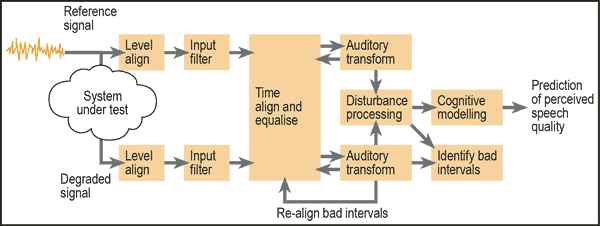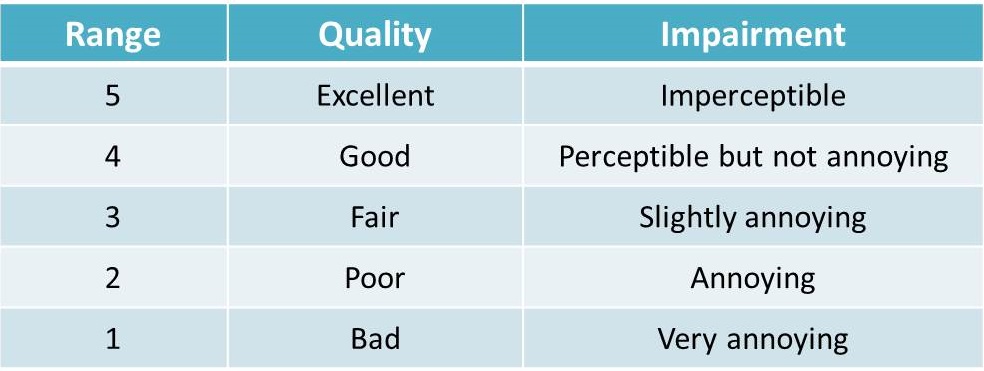Allion Labs
Networking communication has provided us with an abundance of audio services, which has become a staple in modern life. Due to this rapid development of communication technology in recent years, more attention is paid to voice quality, and we need a suitable method for measuring audio quality.
Measurement methods can be divided into two types: subjective perceptual tests and objective perceptual tests.
- Subjective Perceptual Tests
Traditional subjective measurements require a group of participants to listen to and score audio clips on a scale of 1 (bad) to 5 (excellent), and when all scores are averaged, it results in what is called the mean opinion score (MOS). - Objective Perceptual Tests
Because human participation in testing is costly and time-consuming, objective perceptual tests use psychoacoustic modeling, yielding results very similar to traditional subjective testing while cutting expenses and time. Automation through algorithms allows for iterative development as well as production line optimization. The subsequent results are seen as objective because the test is not affected by individual participants or test conditions while the test is easily repeated.
In short, subjective tests require large test bases and long work hours, but with automated objective tests, work hours can be greatly reduced.
Perceptual Evaluation of Speech Quality (PESQ) and Perceptual Objective Listening Quality Analysis (POLQA)
Both Perceptual Evaluation of Speech Quality (PESQ) and Perceptual Objective Listening Quality Analysis (POLQA) belong to the ITU-T family of full reference objective voice quality measurements.
Announced to test narrowband networks in 2001, PESQ is the previous standard for voice quality measurement assessment in communication systems and speed coding defined in ITU-R Rec. P.862. The International Telecommunications Union (ITU) realized the limitations of PESQ, prompting the 2010 announcement of POLQA, outlined in ITU-T Rec. P.863. It is designed for WebRTC and IP based calls.
Advantages of POLQA
- POLQA factors in modern codec behavior such as error correction. PESQ does not, nor is it designed for IP based networks.
- POLQA supports calls of 7 kHz to 14 kHz frequency ranges. PESQ cannot measure speech above 7 kHz, making it incompatible with popular codecs like Opus (8kHz in wideband mode).
- POLQA can track time-warping (variable speed for error correcting), giving reasonable scores when time warping occurs. PESQ cannot resolve time-warping, often giving low scores to WB Codecs.
Perceptual Audio Test Method
- The reference and degraded signals are level aligned then filtered with the transfer characteristics of a receiving device (handset).
- The two signals are time aligned to make up for small time shifts that can occur in voice networks caused by delay, jitter, and coding.
The model converts the two aligned and filtered signals from the time-amplitude domain into a frequency-loudness domain (auditory transform), resolving the distortions that are perceptible by a human listener.

PESQ Block Diagram (Photo: OPTICOM GmbH)
Both signals are analyzed, and an audio quality score is generated. Audible differences accumulate over time and are weighted differently depending on addition of distortions or signal drop-outs.
In the end, the results will yield a single MOS, which represents the quality of the voice clip. The table below depicts the MOS Score Summary:

MOS Score Summary (Photo: Audio Precision)
Allion’s POLQA service utilizes Audio Precision, and specifications are listed below:
- ITU-T P.863 Perceptual Evaluation of Speech Quality with mapping to MOS scale
- Narrowband, Wideband, and Super Wideband operation
- Use with acoustical interfaces
- Input
-
- 16 bit linear audio sampled at 8, 16 or 48 kHz
- Input voice files 6 to 12 seconds in length
- Measurements
-
- MOS
- POLQA
- Instantaneous MOS vs time
- Average MOS (Active Speech and Silence)
- MOS per sample file
These testing capabilities are significant for products like wireless earbuds, headphones, and smartphones. If you need more information on wireless product testing, please fill out our contact form or email us at service@allion.com.
References
- Perceptual Audio Test Options for APx500 Series Analyzers
- POLQA Vs PESQ Objective quality scoring explained






































